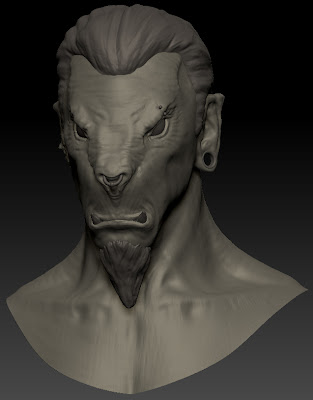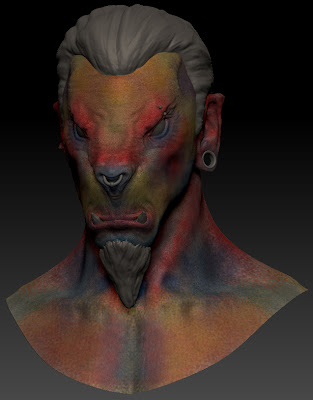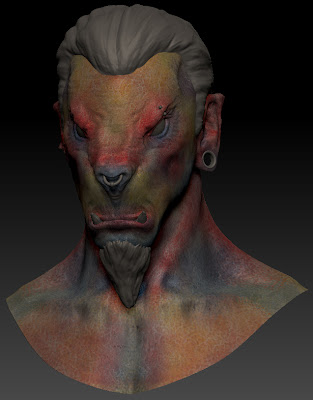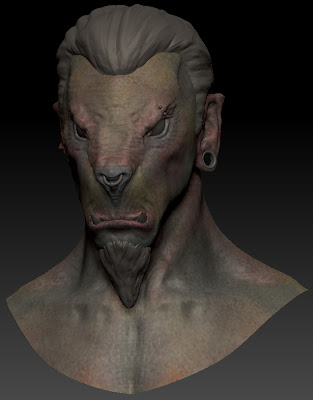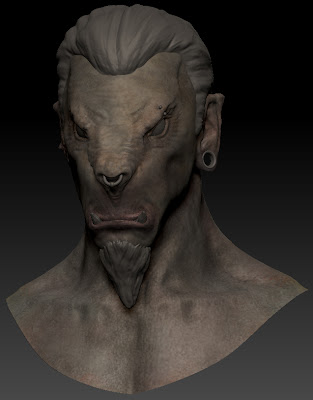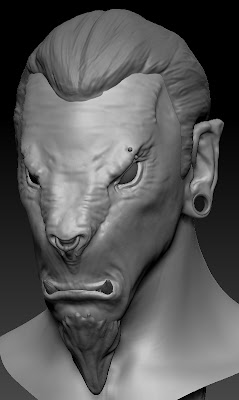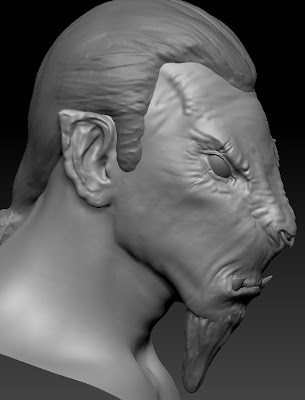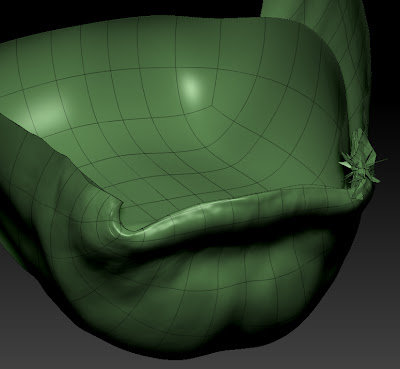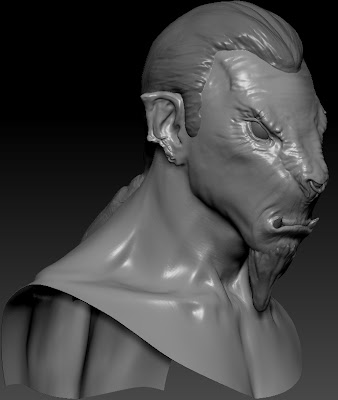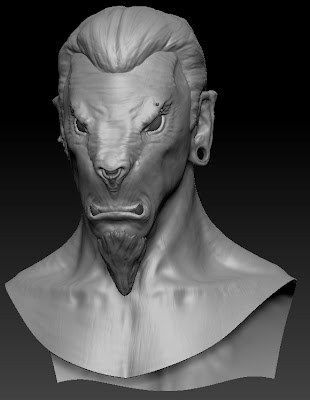Within the pursuit of the creation of realistic characters there is an interesting phenomenon called the Uncanny Valley, the term was coined during the creation of androids and artificial humans by the robotics professor Masahiro Mori. Mori's hypothesis states "that as the appearance of a robot is made more human, a human observer's emotional response to the robot will become increasingly positive and empathic, until a point is reached beyond which the response quickly becomes that of strong revulsion. However, as the appearance continues to become less distinguishable from a human being, the emotional response becomes positive once more and approaches human to human empathy levels. " Mori's hypothesis is also incredibly relevant in the field of character design, where the aim is to achieve as high an emotional and empathic response as is possible from your audience.

Mori's Hypothesis displayed visually as a graph, charting human likeness against positive and negative familiarity.
In terms of visuals, what the uncanny valley means to artists is that as they pursue photo or complete realism the fall prone to having their creations fall short of the goal of being as familiar and as clear in human likeness as a real person, and end up in the uncanny valley. The likeness of their creation can be very near to a human, but to an audience it still evokes that sense of uneasiness, that something isn't quite right with what they are looking at.

As people we have built in an ability to sense when something isn't right when looking at an imitation of a human, this is down to the fact that we spend the vast proportion of our time, looking at and interacting with other humans, we hold eye contact when we communicate forcing us subconsciously to take in lots of details about a person's face and their body language. All of this has means we are very good at spotting when something isn't as we feel it should be, even if we don't know specifically what it is. As a result of this even artistic creations that come far up the right hand side of the uncanny valley can still be viewed with uneasiness and fail to bring audiences to empathise with them.
However within the field of animation it has become apparent that visuals only make up part of what the audience uses to determine whether or not they will empathise with what is on the screen. The way in which a character moves, communicates and is animated makes a huge difference to how the audience receives it. The character of Gollum played by Andy Serkis in the Lord of the Rings Trilogy holds a very definitive bar in the level in which a digital character can be brought to life. By using motion capture techniques Weta Workshop where able to fully capture Andy Serkis' acting that really brought the character to life. However the film the Polar Express used identical motion capture techniques in an effort to enhance their characters which had been designed to be as realistic as possible. The difference is quite incredible as an audience member you wouldn't expect to find yourself finding a malnourished halfling more familar and closer in human likeness than a child. But the fact of it was that the Polar Express's characters, whilst being incredibly realistic in appearance, lacked something necessary for audiences to register them as human.

In the current generation of gaming a number of developers have started to use the same motion capture techniques used in films such as Lord of the Rings, developers Ninja Theory even working with Andy Serkis as their dramatic director. It is evident from the games these developers have produced, that their have managed to strike the balance between realistic characters and avoiding the uncanny valley. Where film it is still common for film visuals to chase the idea of computer generated humans that are indistinguishable from actors, for example the CGI representation of a young Jeff Bridges in Tron Legacy, games have, due to the constraints of working in real time, settled for a more stylized take on. Naughty Dog's Uncharted series is a prime example of how an entire cast of game characters can be ordinary humans rather than steroid using super soldiers and still engage players.

The conclusions I have drawn from researching the uncanny valley are as follows. When creating realistic characters it is important to remember "realism" isn't confined visuals, the character's performance, animation and how the audience responds to it are all equally important. With this in mind it is worth considering how much character Pixar's Luxo lamp has and its just a lamp. Within the medium of games it is always better to pursue stylized realism as it gives your game an identifiable style and allows you to in most case avoid the uncanny valley as you aren't trying to capture quite as much of the nuances of what makes up a human being.

Above is an incredibly detailed 3D still life of Scarlett Johansson by Ahmad Ramadan, however once compared to a photo it becomes very obvious that it is an imitation.
My conclusion is that chasing photo realism in CGI at this time is rather a futile, films have tried to seamlessly blend computer generator films with live action actors and not one has managed it yet. The original designs for the Navi in James Cameron's Avatar where originally much more human in likeness but early on they realised that because of the uncanny valley it would be impossible for the two to sit convincingly on the same screen. This led to features being exaggerated making the Navi more like humanoid animals, keeping enough human characteristics that they audience could relate to them without going to far and failing to engage the audience.
